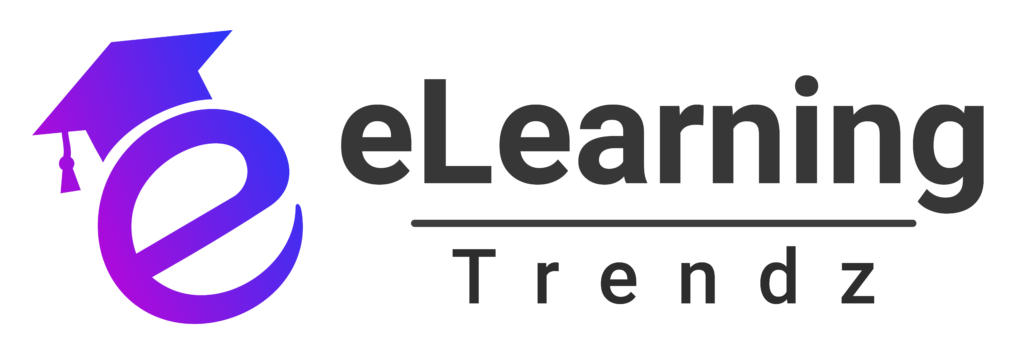In today’s fast-paced digital world, organizations are increasingly relying on technology to streamline processes, improve efficiency, and enhance learning experiences. One of the most transformative tools in this space is a Learning Management System (LMS).
But what exactly is an LMS, how does it work, and why has it become such a critical component for businesses, educational institutions, and even nonprofits? Let’s dive deep into everything you need to know about the best LMS platforms.
What is an LMS?
A Learning Management System (LMS) is a software application or web-based platform designed to create, deliver, manage, and track educational content and training programs. It serves as a centralized hub where learners can access courses, and administrators can monitor progress, performance, and outcomes.
LMS platforms are versatile and can be used for a wide range of purposes, including:
- Employee Training: Onboarding new hires, upskilling teams, and ensuring compliance with industry regulations.
- Customer Education: Teaching customers how to use products or services effectively, which boosts satisfaction and reduces support costs.
- Partner Training: Educating resellers, distributors, or franchisees about brand standards, product features, and sales techniques.
- Academic Learning: Supporting online education for schools, colleges, and universities, enabling blended or fully virtual learning environments.
Whether you’re a small business looking to train your team or a global enterprise managing thousands of learners, an LMS provides the infrastructure needed to deliver structured, scalable, and measurable learning experiences.
How Does an LMS Work?
At its core, an LMS operates as a bridge between content creators (administrators, trainers, or educators) and learners (employees, customers, students, etc.). Here’s a detailed breakdown of how an LMS works:
1. Content Creation and Upload
The first step in using an LMS is creating or uploading learning materials. These materials can take many forms, including:
- Text-Based Content: Articles, PDFs, and eBooks.
- Multimedia Content: Videos, audio files, and presentations.
- Interactive Content: Quizzes, simulations, and gamified elements like badges and leaderboards.
- SCORM/xAPI Modules: Standardized e-learning formats that ensure compatibility across different systems.
Most modern LMS platforms come equipped with built-in authoring tools, allowing administrators to create engaging content without needing advanced technical skills. For more complex needs, LMS platforms often integrate with third-party authoring tools like CogniSpark AI, Articulate 360 or Adobe Captivate.
2. Course Organization and Delivery
Once the content is ready, it’s organized into structured courses or learning paths. These paths can be linear (step-by-step progression) or adaptive (tailored based on learner performance). Learners can access these courses through a web browser or mobile app, often with features like:
- Self-Enrollment: Learners choose their own courses from a catalog.
- Automated Assignments: Courses are assigned automatically based on roles, departments, or other criteria.
- Blended Learning: Combines online modules with live virtual classrooms (via Zoom or Microsoft Teams) or in-person sessions.
Some LMS platforms also support microlearning, delivering bite-sized lessons that cater to short attention spans and busy schedules.
3. Learner Engagement
Engagement is key to successful learning, and modern LMS platforms incorporate several features to keep learners motivated:
- Gamification: Rewards like badges, points, and leaderboards encourage friendly competition and boost participation.
- Social Learning: Discussion forums, peer collaboration tools, and group projects foster community building and knowledge sharing.
- Personalization: AI-driven algorithms recommend courses based on learner behavior, preferences, and past performance.
These elements ensure learners stay invested in their development journey and complete their training successfully.
4. Tracking and Reporting
One of the biggest advantages of an LMS is its ability to track learner progress in real-time. Administrators can monitor metrics such as:
- Course completion rates
- Assessment scores and pass/fail rates
- Time spent on each module
- Areas where learners struggle or drop off
Advanced analytics dashboards provide actionable insights, helping organizations refine their training strategies, identify knowledge gaps, and measure ROI. For example, if a particular module has a high dropout rate, administrators can investigate whether the content is too difficult or poorly designed.
5. Certification and Compliance
For industries requiring certifications or regulatory compliance, an LMS automates workflows to issue certificates upon course completion. It also tracks expiration dates and sends reminders for recertification, ensuring learners stay up-to-date. This feature is particularly valuable in sectors like healthcare, finance, and manufacturing, where non-compliance can lead to legal or financial penalties.
Key Features of an LMS
Modern LMS platforms come equipped with a range of features to enhance functionality and user experience. Some of the most important ones include:
1. Mobile Compatibility
With the rise of remote work and on-the-go learning, mobile accessibility is no longer optional. A good LMS should offer a responsive design that works seamlessly on smartphones and tablets. Some platforms even provide offline access, allowing learners to download content and complete courses without an internet connection.
2. Integration Capabilities
An LMS should integrate seamlessly with other tools your organization uses, such as:
- CRM Systems: Sync data with Salesforce, HubSpot, or Zoho to personalize learning experiences.
- HRIS Platforms: Connect with HR systems to automate employee onboarding and training workflows.
- Helpdesk Software: Integrate with Zendesk or Freshdesk to reduce support tickets by empowering customers with self-service training.
3. Multilingual Support
For global organizations, multilingual capabilities allow content to be delivered in multiple languages, catering to diverse audiences. Automated language detection and localization improve user engagement across regions.
4. E-commerce Functionality
Many LMS platforms offer built-in e-commerce tools, enabling businesses to monetize their courses. Secure payment gateways, subscription models, and promotional tools make it easy to generate revenue while delivering value.
5. Scalability
As your organization grows, your LMS should grow with you. Look for platforms that can accommodate increasing numbers of users, courses, and features without compromising performance.
6. Security and Privacy
Robust security measures, including encryption, single sign-on (SSO), and role-based access control, protect sensitive learner data. Compliance with regulations like GDPR and CCPA ensures privacy standards are met.
Benefits of Using an LMS
Implementing an LMS offers numerous benefits for organizations, learners, and administrators alike:
For Organizations:
- Cost Efficiency: Reduces the need for in-person training and printed materials, cutting down on travel and logistics expenses.
- Scalability: Easily scales to accommodate more users or additional content as your business grows.
- Data-Driven Insights: Tracks performance and identifies areas for improvement, enabling continuous optimization of training programs.
- Improved Productivity: Well-trained employees and customers are more efficient, leading to better outcomes and higher satisfaction.
For Learners:
- Flexibility: Learn at their own pace, anytime and anywhere, making it ideal for remote workers or busy professionals.
- Personalization: Access tailored content that matches their needs, goals, and skill levels.
- Engagement: Interactive and gamified elements make learning enjoyable and less monotonous.
For Administrators:
- Automation: Simplifies tasks like enrollment, notifications, and reporting, freeing up time for strategic initiatives.
- Centralized Control: Manages all training programs from a single platform, reducing administrative overhead.
- Compliance Assurance: Ensures adherence to industry regulations and standards, minimizing risks.
Who Uses an LMS?
Almost any organization can benefit from an LMS, depending on its goals:
- Corporate Businesses: Train employees, onboard new hires, and educate customers.
- Educational Institutions: Deliver online courses and manage student progress.
- Nonprofits: Provide training to volunteers or stakeholders.
- Healthcare and Manufacturing: Ensure compliance with safety and regulatory standards.
Final Thoughts
An LMS is more than just a tool—it’s a catalyst for growth, innovation, and transformation. By providing a structured, scalable, and engaging way to deliver learning, it empowers organizations to unlock the full potential of their people. Whether you’re looking to train employees, educate customers, or support academic learning, an LMS can help you achieve your goals efficiently and effectively.
So, are you ready to embrace the power of an LMS and revolutionize the way you learn and teach? The future of education and training starts here!









